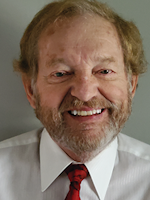Don’t inject the palate again! Use this simple and straightforward method
There is no need for any dentist to ever give a painful palatal injection again. There are many ways to grow one’s practice, but none are more essential than providing painless, predictable, profound anesthesia. The information in this article describes a technique I used for more than 20 years, and I’m amazed every dentist does not employ it.
Here's what I do
I’ll use the sensitive no. 8 area for my example. After placing topical, I begin by injecting into facial tissue over no. 6 with the needle canted toward the midline. I inject very slowly, wiggling tissues vigorously as I go. A steady stream of conversation also helps to distract the patient. Carbocaine, with its neutral pH, is what I found to be most comfortable for this first shot.
Next, I infiltrate over no. 7, and you can use the anesthetic of your choice. I again tip the needle toward the midline. Then, employing a pressure syringe, I inject into the distal, then mesial papilla. Palatial blanching will be evident, and after injecting painlessly into the lingual sulcus, I can begin treatment, even extractions, almost immediately. (Except in the ultra-sensitive maxillary anterior region, only one buccal infiltration is required.)
This technique works on every tooth except lower molars, where I prefer to use the Gow-Gates technique. My personal experience employing only a pressure syringe on mandibular molars has been:
- Shots are quite painful unless one employs buccal infiltration first.
- Pressure injections cause post-operative gingival pain that can linger for days.
- It doesn’t give predictably profound anesthesia.
- Numbness does not last long, certainly not long enough for endo or extractions or to assure post-op comfort.
If the block proves inadequate, supplementing with a pressure syringe injection in several places inside the sulcus, including the lingual, should suffice. For the profoundly needle-phobic, conscious sedation seems superior to IV sedation, which requires inserting a larger needle.
I hope I've given you information that will help you grow your practice!
John A. Wilde, DDS, practiced in Keokuk, Iowa, and is now blissfully retired. He’s written six dental books and had more than 200 articles published in a wide variety of journals. He may be reached at (309) 333-2865 or [email protected].







